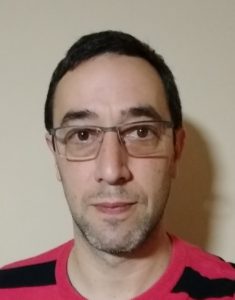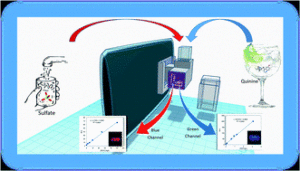We are very pleased to introduce Dr Ezequiel Vidal, one of the corresponding authors of the paper ‘New, inexpensive and simple 3D printable device for nephelometric and fluorimetric determination based on smartphone sensing‘. The article was published as a part of his PhD thesis, directed by Dr Claudia Domini, Universidad Nacional del Sur in Bahía Blanca, Argentina. Their article has been very well received and handpicked by our reviewers and handling editors as one of our May HOT articles. Ezequiel was kind enough to tell us more about the work that went into this article and what he hopes to achieve in the future. You can find out more about the author and their article below and find more HOT articles in our online collection.
Meet the Author
Ezequiel Vidal studied biochemistry in Universidad Nacional del Sur, Bahia Blanca, Argentina. In 2002, he received his degree and from 2003 his work was far from research laboratories. In 2017, he started working towards his doctoral thesis in analytical chemistry. Since 2015 his principal work is as a biochemist in the municipal bromatology laboratory of Bahia Blanca, Buenos Aires Argentina.

The reasearch group: Back row (from left to right) – Damián Uriarte, Maite Aguinaga, Sofia Rivero, Dr. Anabela Lorenzetti and Ezequiel Vidal. Front row – Natalis Gomez, Dr. Claudia Elizabeth Domini and Dr. Mariano Garrido.
Could you briefly explain the focus of your article to the non-specialist (in one or two sentences only) and why it is of current interest?
The article describes the creation and validation of a cheap 3D printed device that can be attached to a smartphone for making chemical determinations. This gadget represents an ideal solution for developing countries, remote places and on site determinations.
How big an impact could your results potentially have?
The use of this device helps to reduce costs and simplify technology. Its impact could be big in places where there are no conventional laboratories. What is more, the development of this kind of device can simplify and generalize the use of inexpensive and portable sensing instruments.
Could you explain the motivation behind this study?
The motivation for this study was to prove that smartphones can be used far beyond simple applications.
In your opinion, what are the key design considerations for your study?
The key consideration in this study is to use general principles of analytical instrumentation to create a new and simplified device for specific uses.
Which part of the work towards this paper proved to be most challenging?
Optimizing the device dimensions for an optimal working condition was the most challenging part of the work.
What aspect of your work are you most excited about at the moment?
3D printed devices are every day more accessible, creating not just simple pieces but complete determination systems.
What is the next step? What work is planned?
We are working on different kinds of optical devices related with smartphones and 3D printers. There is a lot of work to do until this technology reaches its maximum level.
New, inexpensive and simple 3D printable device for nephelometric and fluorimetric determination based on smartphone sensing
Ezequiel Vidal, Anabela S. Lorenzetti, Miguel Ángel Aguirre, Antonio Canals and Claudia E. Domini
RSC Adv., 2020,10, 19713-19719
DOI: 10.1039/D0RA02975K
 Submit to RSC Advances today! Check out our author guidelines for information on our article types or find out more about the advantages of publishing in a Royal Society of Chemistry journal.
Submit to RSC Advances today! Check out our author guidelines for information on our article types or find out more about the advantages of publishing in a Royal Society of Chemistry journal.
Keep up to date with our latest HOT articles, Reviews, Collections & more by following us on Twitter. You can also keep informed by signing up to our E-Alerts.












